![[+] Sydney Metro West Station Precinct Plans Revealed](/_next/image?url=https%3A%2F%2Fimages.ctfassets.net%2F8pr762qjocl3%2F2dtliYdglhWt2CG7A627h3%2F8eef78951d2becd4006d6cd016c509f1%2FMetroT_hero.jpg%3Fw%3D1600%26q%3D75&w=3840&q=75)
Sydney Metro has unveiled the complete plans for the new Sydney Metro West line that will help cater for the 420,000 additional residents moving to the area during the next 20 years.
The plans show the infrastructure, stations and precincts that will extend the railway line 24km from the city, past Parramatta.
Construction is already under way and is due to be fully operational by 2030.
The confirmed stations are at Westmead, Parramatta, Sydney Olympic Park, North Strathfield, Burwood North, Five Dock, The Bays, Pyrmont and Hunter Street.
Eventually the line will join from Westmead to the Western Sydney Aerotropolis with future Sydney Metro plans for an airport connection with the western line, the north-west line joining Tallawong to Scholfields and St Marys, as well as joining Bankstown to Liverpool.
The new Sydney Metro West line is expected to make the journey from the CBD to Parramatta in just 20 minutes.
The line will support the growing population of western Sydney, and support developments and new communities along the route.
“Provision for over station development would be made at Parramatta, Sydney Olympic Park, Pyrmont and Hunter Street,” the application said.
“Provision for adjacent station development would be made at Westmead, Parramatta, Sydney Olympic Park, Burwood North and The Bays.”
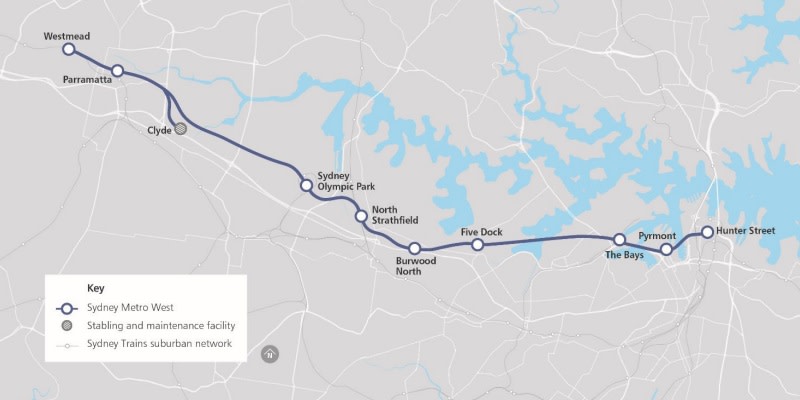
The project will be the first time in Australia autonomous tunnel boring machines have been used.
The machines will be used to excavate twin 9km rail tunnels as part of the $2.16-billion Western Tunnelling Package awarded in February to the Gamuda Australia and Laing O’Rourke consortium.
They have contracted world-leading manufacturer Herrenknecht to design, build and deliver the machines.
The two mega-machines will use AI software, developed by Gamuda, to steer, operate and monitor a number of their functions.
“While an operator remains in control, the autonomous system takes on all repetitive tasks from the operator with greater accuracy,” NSW transport minister David Elliott said.
“The technology also allows the borers to be more accurate and precise, reducing the time required to excavate the tunnels, therefore saving project costs.
“While these machines look the same as others used on Sydney Metro projects, this technology means exact tunnelling speed and force is used. This lessens the impact on the equipment which reduces the amount of down-time for maintenance.”
The autonomous machines will join a fleet of borers that will dig the 24kms of tunnels from the Sydney CBD to Parramatta.
Tunnelling is scheduled to start from The Bays to Sydney Olympic Park at the end of this year.
The two autonomous tunnel boring machines are expected to be in the ground by the end of 2023 to deliver the metro rail tunnels from Sydney Olympic Park to Westmead.
Each autonomous machine is 1266 tonne, 165m long and designed to excavate through sandstone and shale. They will tunnel an average of 200 metres per week with a team of 15 workers per shift.
Westmead metro station
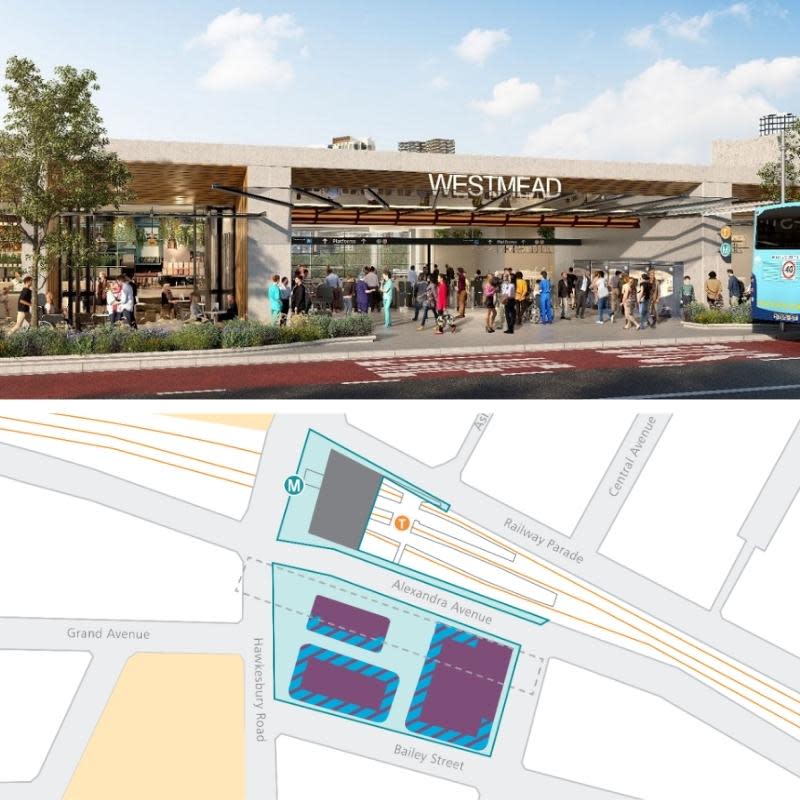
Location
Hawkesbury Road, between Railway Parade and Alexandra Avenue.
Station
2-3 storeys north of Alexandra Venue, 5-6 storeys to the south with station services and utilities.
Precinct
A new public plaza on the south side of the station with rail, commercial or community facilities along with an activated ground level.
The vision is for an health and education precinct. The site, subject to separate approvals, is bound by Bailey Street, Hassell Street, the train line and Hawkesbury Road.
Parramatta metro station
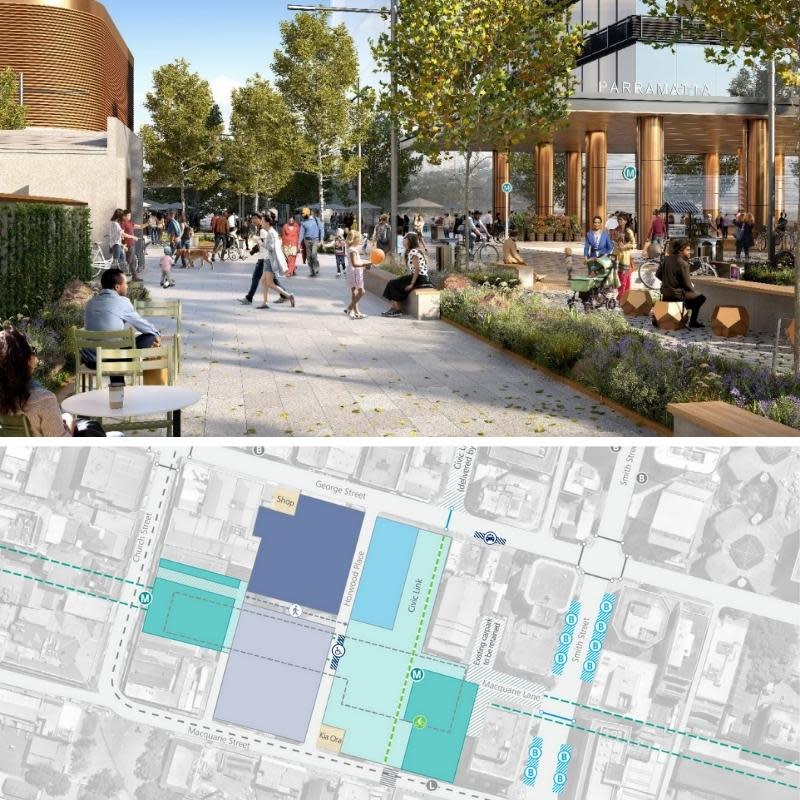
Location
The block between George Street, Macquarie Street, Church Street and Smith Street, in the middle of Parramatta.
Station
An underground station with an island platform and a pedestrian link from Parramatta Square to River Square with the potential to connect to future rail links.
Precinct
There will be an over-station development and additional buildings on residual construction land that are subject to separate approvals.
This includes a new tower on Horwood Place and three over-station towers with above-ground station infrastructure and parking.
Sydney Olympic Park metro station
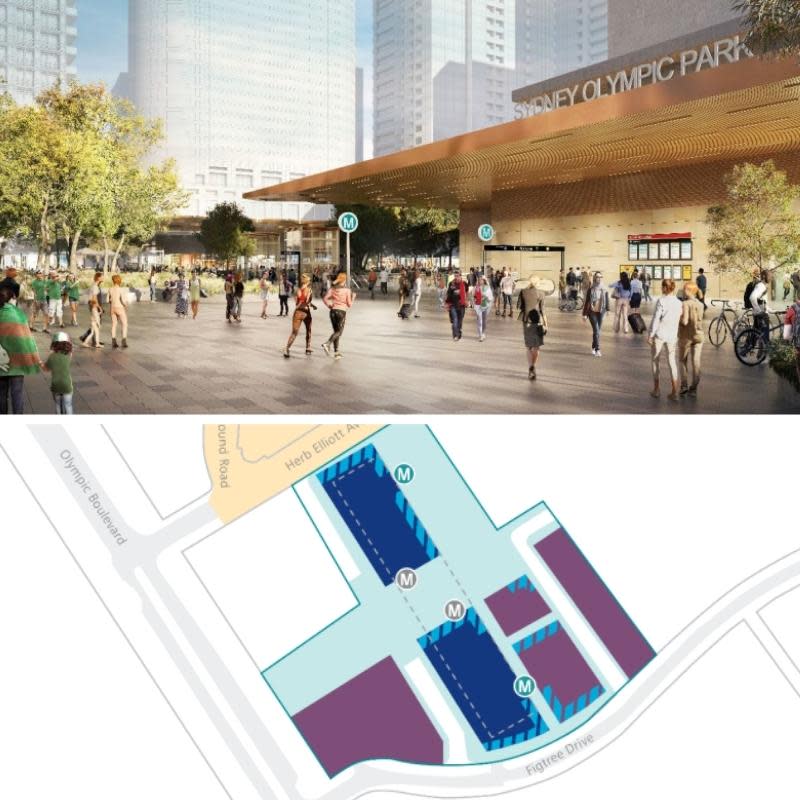
Location
Close to Olympic Boulevard and between Herb Elliott Avenue and Figtree Drive.
Station
An underground station with an island platform. There will be a day-to-day mode and two additional platforms when the station is in event mode.
Precinct
The metro precinct is already characterised by commercial properties including office, retail and education.
The broader precinct will have a mix of apartments, commercial buildings and cultural spaces.
The over-station development is subject to separate assessment and approvals with potential for two commercial towers along with four adjoining sites for mixed-use towers.
North Strathfield metro station
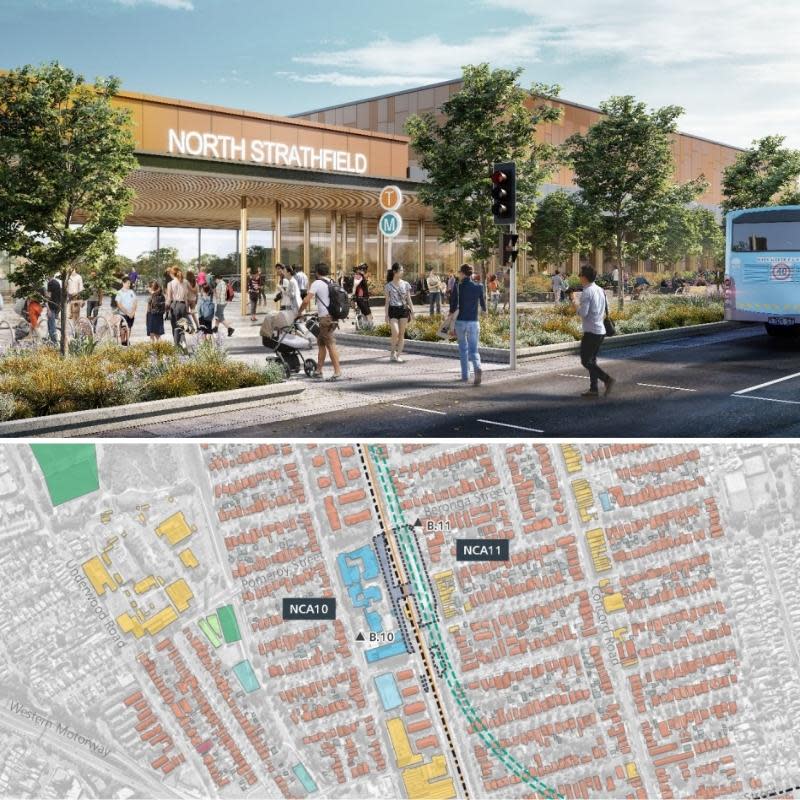
Location
Next to the existing North Strathfield Station, parallel to Queen Street.
Station
An underground station with an island platform and footbridge between the metro and train services.
Precinct
The vision is for area is a high-amenity living precinct, however, no additional space for adjoining projects or over-station development are proposed.
Currently the site is surrounded by single-detached homes, townhouses, schools and low-rise apartments.
Burwood North station
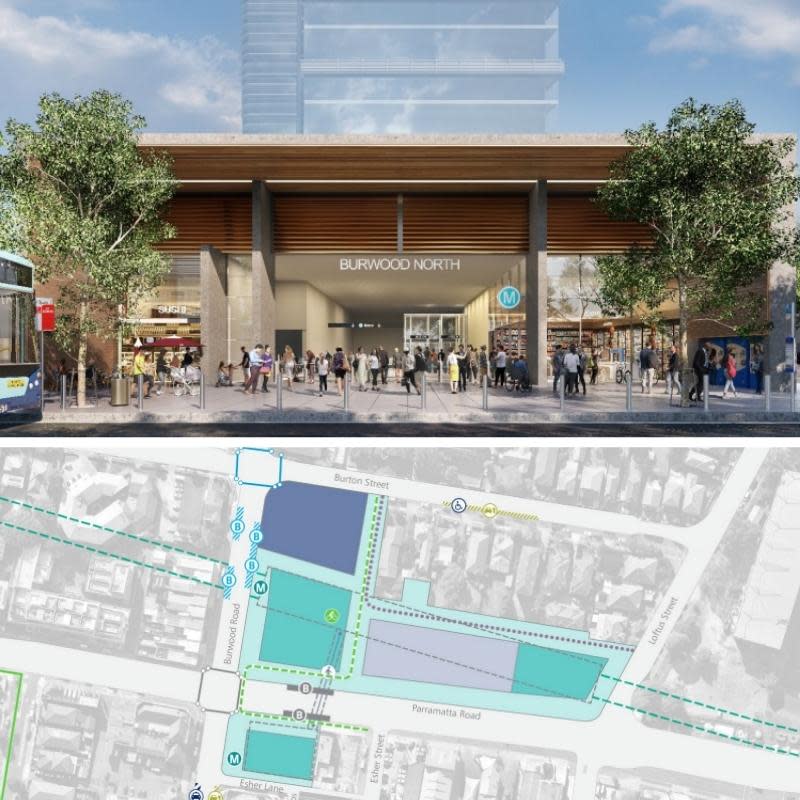
Location
Parramatta Road and Burwood Road intersection across two sites.
Station
An underground station with two entrances on either side of Paramatta Road along with a 10-storey building for infrastructure and non-station use.
Precinct
This will be a high-density residential area and employment precinct extending the spines of the two main roads.
There is be space for non-station use within the buildings above the station as well as an adjacent station development site.
This is on the corner of Burton Street and Burwood Road.
Five Dock metro station

Location
In Five Dock town centre off Great North Road.
Station
An underground station with two platforms accessed via Fred Kelly Place.
Precinct
The station is the hub of a revitalised local centre supporting a diverse range of dwellings, night time economy and expansion of Fred Kelly Place.
However, no over-station or adjacent developments are proposed in the application.
The Bays metro station

Location
At White Bay between Glebe Island and the former White Bay Power Station with access to the future waterfront prominade.
Station
A new underground station with seven to eight storeys above street level.
Precinct
The vision for this area is a mixed-use innovation precinct alongside the harbour with employment, civic, retail and residential use.
One of the largest public domain or adjacent station developments, the precinct includes the area between the White Bay Power Station and the waterway.
The station is the first step to unlocking the area. Separate to the station and associated developments, 77ha of land is to be rezoned with opportunities for new hotels, a cruise terminal and other mixed-use projects.
Pyrmont metro station
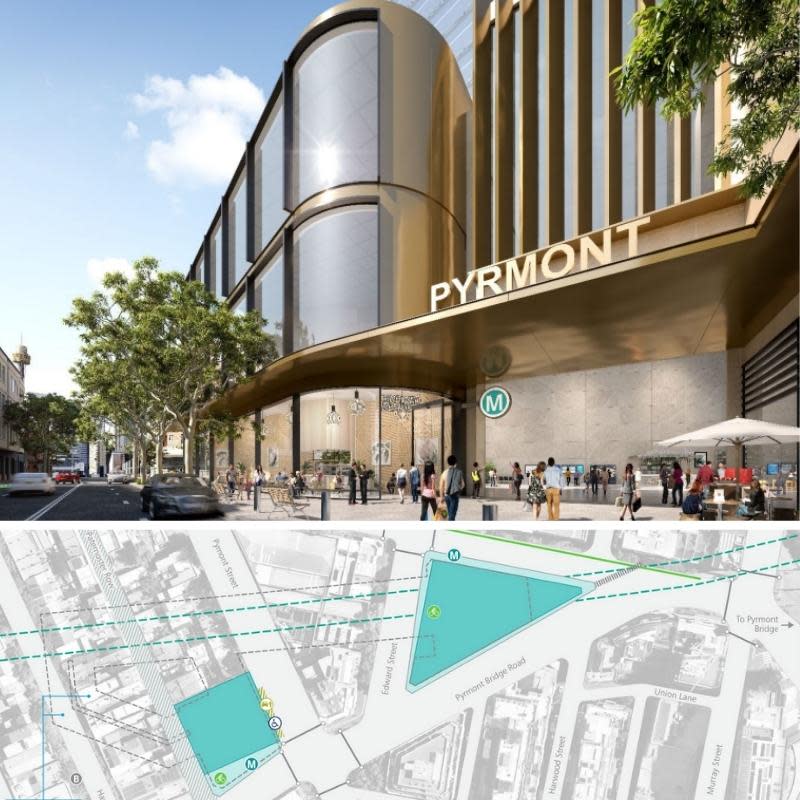
Location
At Pyrmont peninsula with two entrances, at Pyrmont Bridge Road and Union Street.
Station
The split underground station would have three to five storeys of infrastructure above station level with an over-station development at both entrances.
Precinct
This new habour-side precinct will be focused around retail, knowledge-intensive employment and residential activities.
The plans for Pyrmont are further progressed than other stations and are expected to feature a tower above a podium at each entrance.
The application for this development will also be assessed separately.
Hunter Street station
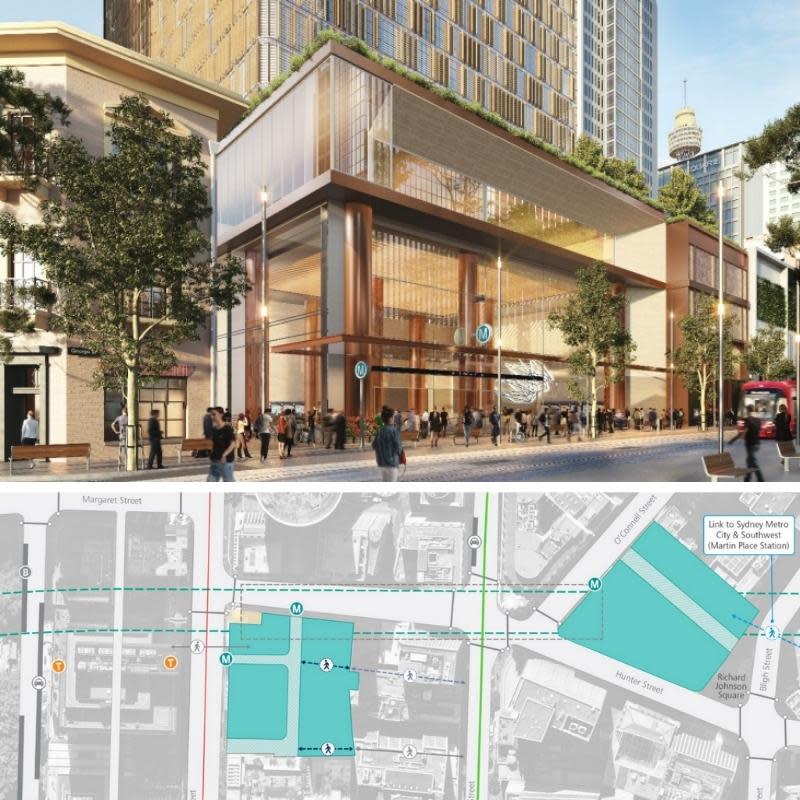
Location
This station is over two sites, one at the south-east counter of Hunter and George streets and the other bounded by O’Connell, Hunter and Bligh streets.
Station
A “landmark station that reinforces the commercial heart” of the city, the underground station will have through-site links.
Precinct
The area is surrounded by offices, shops, entertainment and nightlife.
The application shows a single tower above each entrance with the taller of the two to be on the eastern side near Bligh Street with five-storey podiums.
The early renders for this project was the first unveiled by the NSW government last year. Ten existing commercial and retail properties would need to be acquired for the build. No adjoining sites are indicated in the plans.
You are currently experiencing The Urban Developer Plus (TUD+), our premium membership for property professionals. Click here to learn more.















